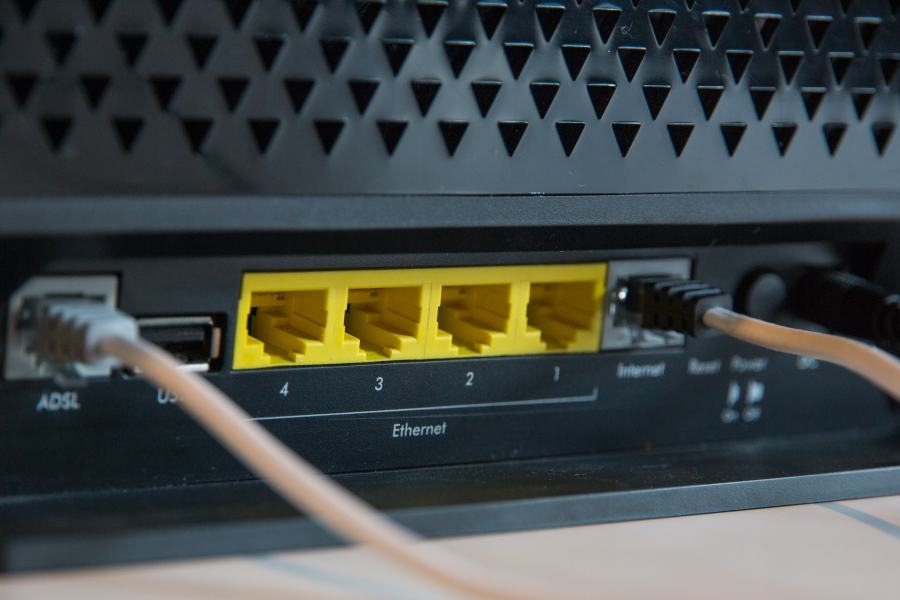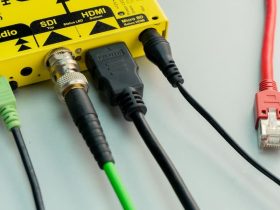In today’s interconnected world, where our daily lives heavily rely on the internet, securing our WiFi networks is of paramount importance. As a popular internet service provider, Verizon offers reliable connectivity to millions of users. However, using default passwords or neglecting to change them regularly can expose your network to potential threats. This article is a comprehensive guide to help Verizon users change their WiFi passwords effectively. Following the step-by-step instructions and implementing additional security measures, you can safeguard your network and protect your personal data and online privacy. Let’s dive into enhancing your WiFi security with a simple password change.
How To Change Verizon Wifi Password?
Changing your Verizon WiFi password is a straightforward process that can significantly enhance the security of your home network. By following these step-by-step instructions, you can protect your data, devices, and privacy from potential threats.
Accessing the Router’s Administration Interface:
To get started, ensure you are connected to your Verizon WiFi network. Open a web browser on a device connected to the network and type the router’s IP address into the address bar. Typically, the IP address is “192.168.1.1” or “192.168.0.1.” Press “Enter” to access the router’s login page.
Entering Login Credentials:
On the login page, you must enter the router’s admin username and password. These credentials are usually printed on a sticker located on the router itself. If you’ve personalized the login details in the past and don’t remember them, you might need to reset the router to its default settings. Once you’ve entered the correct credentials, click “Login” to access the router’s administration interface.
Navigating to the Wireless Settings:
Once logged in, navigate through the router’s settings to find the “Wireless” or “WiFi” section. The location of this setting may vary depending on the router model and firmware version. Look for options related to your WiFi network’s configuration.
Selecting the Appropriate WiFi Network:
If your router supports 2.4 GHz and 5 GHz bands, choose the one you want to change the password. Most routers have separate settings for each band. Click on the corresponding option to proceed.
Changing the WiFi Password:
In the selected WiFi network settings, you will find the current WiFi password. Replace it with a new, strong, and unique password. Aim for a combination of uppercase and lowercase letters, numbers, and special characters to create a robust password. Remember, a strong password is crucial for preventing unauthorized access to your network.
Reconnecting Devices to the WiFi Network:
Once the router has restarted, you must reconnect all your devices to the WiFi network using the new password. Go to the WiFi settings on each device, locate the network name (SSID) associated with your Verizon router, and enter the new password when prompted.
The Importance Of Password Change
The need for a password change, especially concerning your Verizon WiFi network, is rooted in the critical importance of network security. A default or outdated WiFi password can leave your network vulnerable to potential security breaches and unauthorized access. Understanding the reasons behind changing your Verizon WiFi password will help you recognize the significance of this simple yet essential practice:
Routers often come with default passwords, which are widely known and published online. Failing to change the default password makes it easier for hackers to gain access to your network. By changing the password, you create a unique barrier that significantly reduces the risk of unauthorized users infiltrating your WiFi network.
Your WiFi network carries a wealth of personal information, including passwords, financial data, and sensitive documents shared between connected devices. A strong and regularly updated WiFi password safeguards this data from potential cyber threats, ensuring the privacy and security of your online activities.
With an insecure WiFi password, neighbors or passersby might use your network without your knowledge. This unauthorized use can lead to decreased bandwidth and slower internet speeds. Changing your WiFi password ensures that only authorized users can access your network resources.
Cybercriminals often employ various techniques to compromise vulnerable WiFi networks. They may launch phishing attempts, malware injections, or Man-in-the-Middle attacks to gain unauthorized access to your connected devices. Changing your password regularly adds an extra layer of protection against these potential threats.
As technology evolves, so do the methods used by cybercriminals. To avoid these threats, industry best practices recommend changing passwords periodically. By adhering to these guidelines, you demonstrate your commitment to maintaining a secure network environment.
Many modern homes have Internet of Things (IoT) devices, such as smart home gadgets and appliances, connected to the WiFi network. A compromised network could lead to unauthorized control or access to these devices. Changing your WiFi password helps safeguard your IoT ecosystem.
Suppose you have children or other vulnerable individuals in your household. In that case, a secure WiFi network is essential for their safety. By keeping your network password up-to-date, you reduce the risk of exposure to inappropriate or harmful online content.
Accessing The Router’s Administration Interface
Accessing the router’s administration interface allows you to configure and manage various settings for your Verizon WiFi router. This interface lets you change your WiFi password, set up security features, and manage connected devices. Here’s a step-by-step guide on how to access the router’s administration interface:
Connect to Your Verizon WiFi Network: Ensure you are connected to your Verizon WiFi network before proceeding. You can connect your computer or mobile device to the WiFi network broadcasted by your Verizon router.
Open a Web Browser: Launch a web browser on your connected device. You can use popular browsers like Google Chrome, Mozilla Firefox, Safari, or Microsoft Edge.
Enter the Router’s IP Address: In the web browser’s address bar, type the IP address of your Verizon router and press “Enter.” The IP address is typically one of the following: “192.168.1.1” or “192.168.0.1.” These are the most common default IP addresses used by Verizon routers, but variations may vary depending on the model.
Router Login Page: After entering the IP address, you will be directed to the router’s login page. Here, you will be prompted to enter your login credentials.
Enter the Router’s Admin Username and Password: To log in to the router’s administration interface, you need the administrator username and password. These credentials are essential for security purposes and are usually provided by Verizon. If you have yet to change them, you can find the default username and password on a sticker located on the router itself.
Log In to the Router: Enter the admin username and password in the appropriate fields on the login page and click the “Login” or “Submit” button. If the login information is correct, you will be granted access to the router’s administration interface.
Router Dashboard: Once logged in, you will be presented with the router’s dashboard or central control panel. This interface may vary depending on the router model and firmware version. It provides access to various settings and configurations for your WiFi network and connected devices.
Tips For Creating A Strong Password
Creating a strong password is essential for enhancing the security of your online accounts, including your WiFi network. A strong password makes it more challenging for hackers to gain unauthorized access to your sensitive information. Here are some tips to help you create a strong password:
- Aim for a minimum password length of 12 characters or more. Longer passwords are generally more secure because they are harder to crack through brute-force attacks.
- Include uppercase letters, lowercase letters, numbers, and special characters (such as ! @, #, $, %, etc.). The more diverse characters you use, the stronger your password becomes.
- Avoid using easily guessable information, such as common words, names, birthdays, or phone numbers. Hackers can use personal information to attempt to crack your password.
- Using whole words from the dictionary, even in combinations, is not recommended, as they are susceptible to dictionary attacks.
- Instead of single words, use passphrases – a series of random words or a sentence. Passphrases are easier to remember and can be more secure. For example: “PurpleElephant$Jumping@42.”
- Avoid repeating consecutive characters like “123456” or “a.” These are among the most common and easily guessed passwords.
- Avoid using the same password across multiple accounts. If one account gets compromised, it could lead to security issues with other accounts.
- Avoid using common keyboard patterns like “qwerty” or “asdf.” These are easily identifiable and vulnerable.
- Do not use easily accessible personal information, such as your name, username, or family member’s name, in your password.
- Even with a strong password, it’s essential to change it periodically (at least every few months) to maintain security.
- Consider using a reputable password manager to generate, store, and manage complex passwords securely. This way, you don’t have to memorize them all.
- Whenever possible, enable two-factor authentication for an added layer of security. 2FA requires a second form of verification (like a text message or app-generated code) and your password.
Bottom Line
In conclusion, the bottom line is that changing your Verizon WiFi password and creating a strong password are crucial steps in maintaining a secure and protected home network. The need for a password change is driven by the importance of safeguarding your personal data, devices, and online privacy from potential threats. By accessing the router’s administration interface, you can easily change your WiFi password and implement additional security measures to enhance network protection.
FAQ’s
How often should I change my Verizon WiFi password?
It is recommended to change your WiFi password periodically, ideally every 3 to 6 months. Regular password changes enhance security and reduce the risk of unauthorized access.
Can I change my WiFi password from any device?
Yes, you can change your WiFi password from any device connected to your Verizon network. Simply access the router’s administration interface through a web browser and follow the steps to change the password.
Will changing the WiFi password disconnect all devices?
Yes, once you change the WiFi password, all currently connected devices will be disconnected from the network. To reconnect, you must enter the new password on each device.
What should I do if I forget my new WiFi password?
If you forget your new WiFi password, you can reset the router to its factory default settings. However, keep in mind that this will also reset all other configurations on the router.
























Leave a Reply